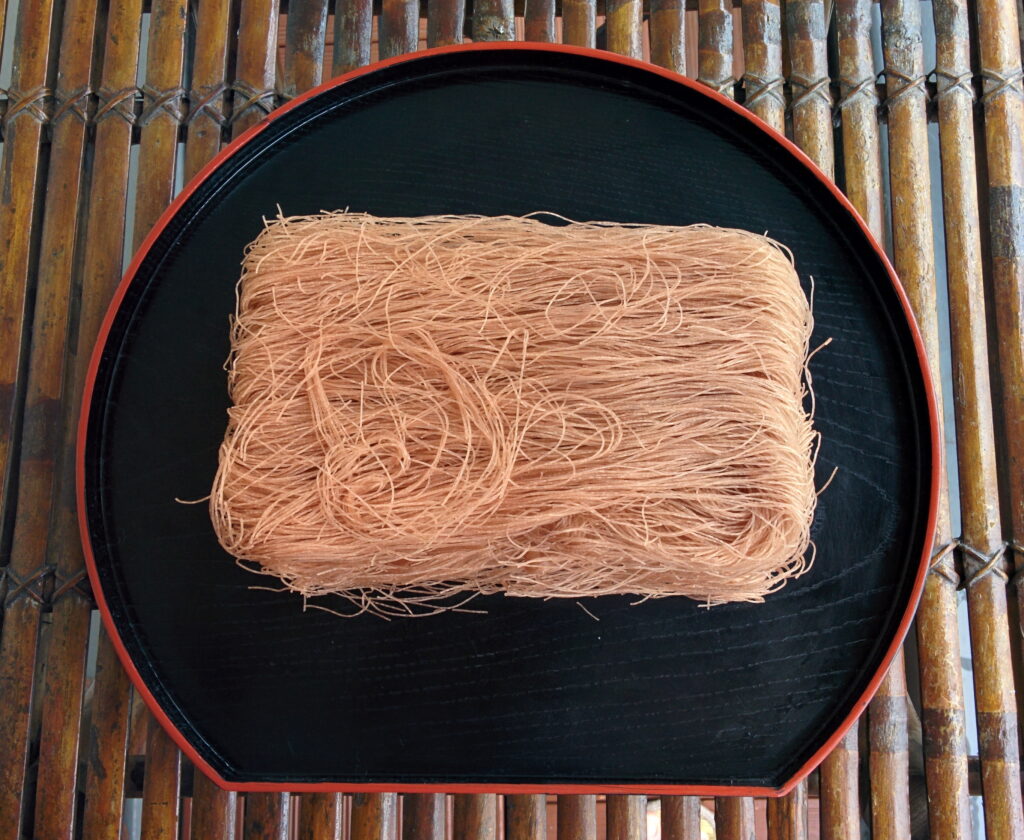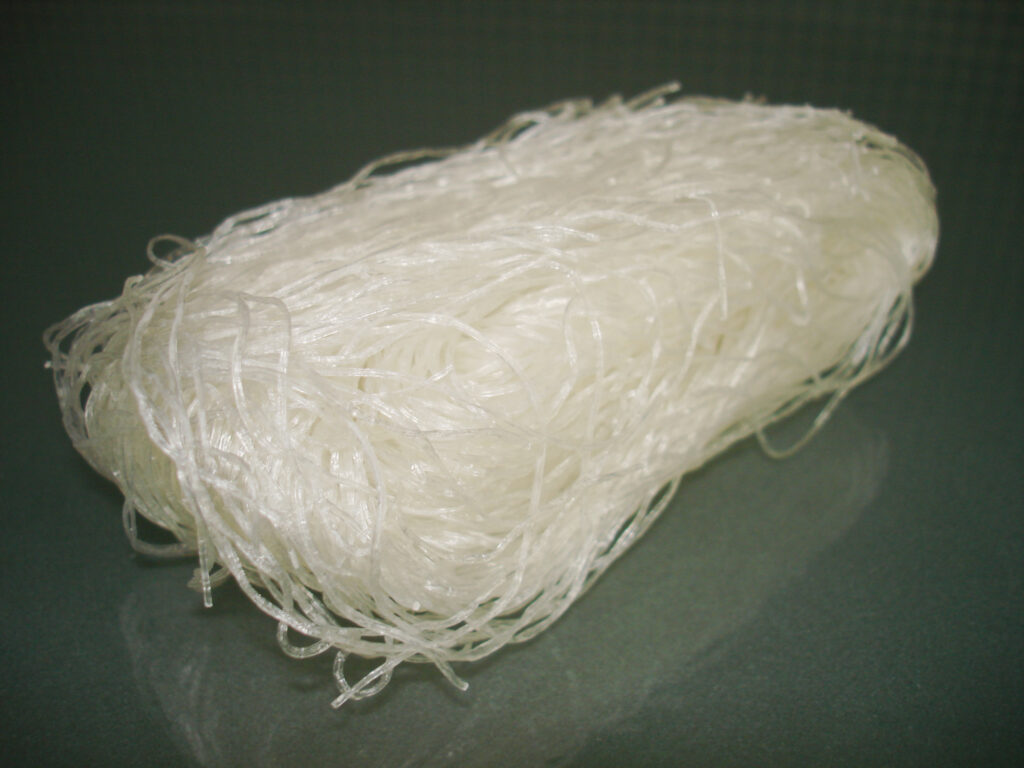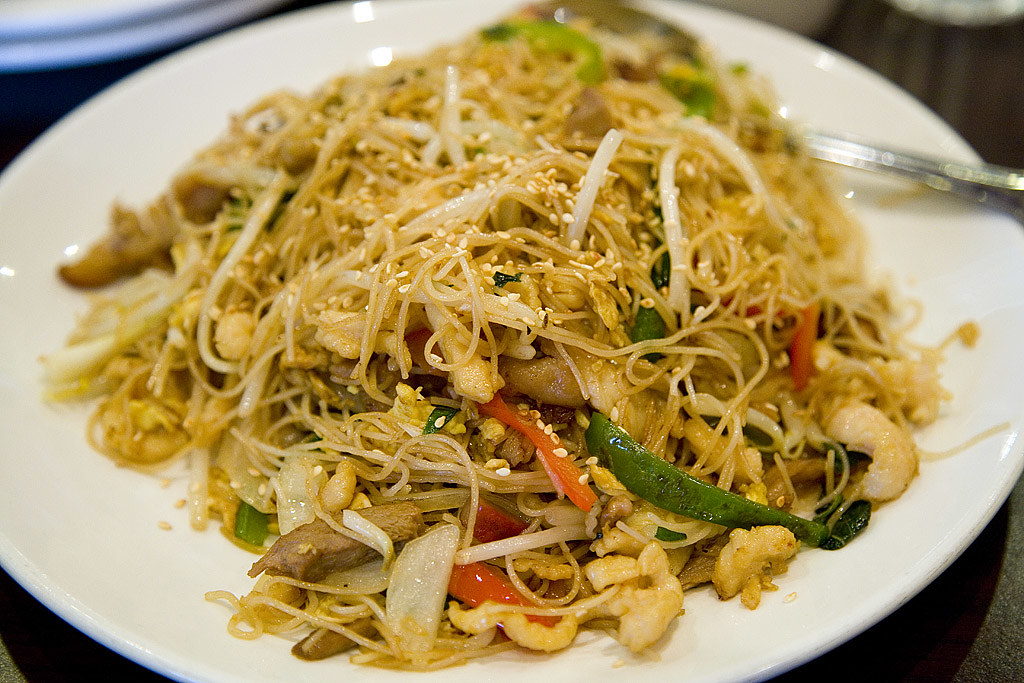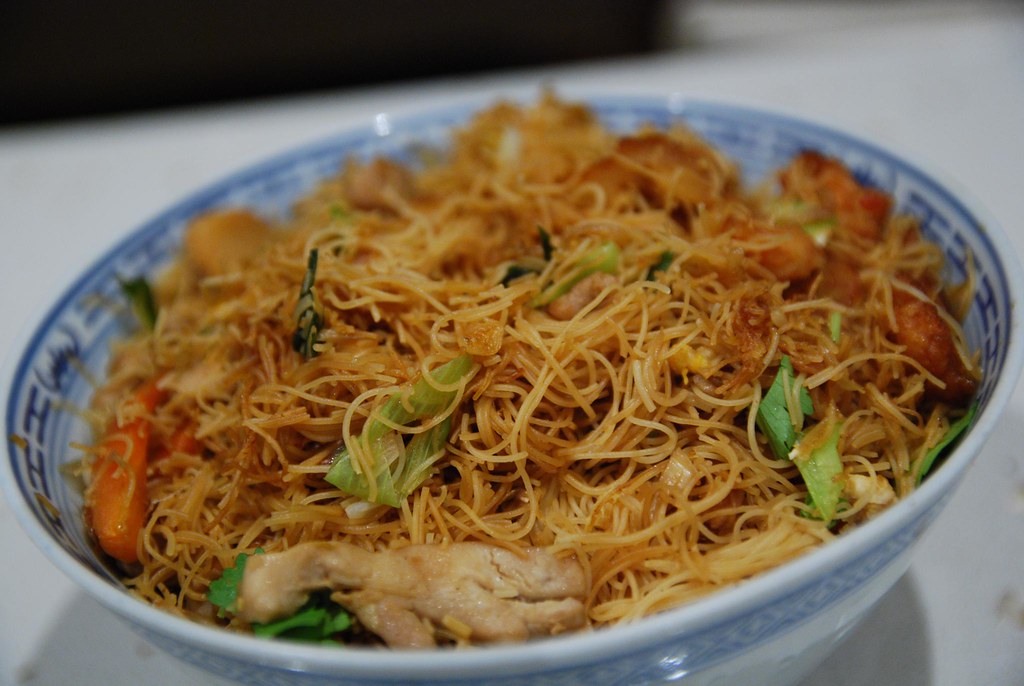Vermicelli may sound like a fancy culinary term, but these little noodles are quite humble. Their name comes from the Italian word “vermicello,” which means “little worm.” And yes, their long, thin shape does bear a resemblance to those wiggly creatures.
What is Vermicelli?
There are two main types of vermicelli: wheat and rice.
Wheat vermicelli: Made from semolina flour, this type has a slightly yellow color and a firm texture. It’s commonly used in Italian dishes like soups, salads, and pasta bakes.
Rice vermicelli: Made from rice flour and water, this type is white and translucent with a softer texture. It’s a staple ingredient in many Asian cuisines, such as Vietnamese pho, Thai stir-fries, and Chinese spring rolls.
Vermicelli Beyond the Bowl
While vermicelli is most commonly associated with savory dishes, it can also be used in sweet treats. In India, for example, vermicelli pudding is a popular dessert made with milk, sugar, and nuts.
No matter how you choose to use it, vermicelli is a versatile and delicious ingredient that can add a touch of intrigue to any meal. So next time you’re at the grocery store, don’t be afraid to pick up a package and give this a try.
How Vermicelli is made?
The journey of vermicelli, from humble grain to tiny, versatile noodle, can be told through two main paths: wheat and rice.
Wheat Vermicelli:
Milling: The journey starts with durum wheat, a hard wheat variety perfect for pasta. It’s ground into semolina flour, a coarse flour with larger granules than all-purpose flour.
Mixing: Semolina flour is mixed with water and sometimes a bit of salt to form a dough. The exact proportions and additional ingredients can vary depending on the desired texture and flavor.
Extrusion: This is where the magic happens! The dough is fed into a machine with a special plate that has tiny holes shaped like worms. As the dough is pushed through the holes, it emerges as thin, long strands of vermicelli.
Drying: Freshly extruded vermicelli are still quite moist. They are spread out on trays or hung on racks and dried in a controlled environment (usually with warm air and good ventilation) for several hours or even days until they become firm and dry.

Packaging: Finally, the dried vermicelli is cooled, sorted, and packaged. They’re ready to be shipped to stores and kitchens around the world.
Rice Vermicelli:
Soaking and Grinding: Rice, usually long-grain varieties like jasmine or basmati, is first soaked in water to soften it. Then, it’s ground into fine rice flour.
Mixing and Shaping: Rice flour is mixed with water and sometimes tapioca starch or other binders to form a smooth dough. This dough is then pressed through a special mold or extruded through tiny holes, similar to wheat vermicelli, to create the thin, long strands.
Steaming or Boiling: Unlike wheat vermicelli, which are dried, rice vermicelli are usually cooked right after shaping. They are either steamed in baskets or boiled in water for a few minutes until they become translucent and tender.

Cooling and Drying: After cooking, the rice vermicelli are quickly cooled down, usually in cold water, to stop the cooking process and prevent them from becoming mushy. Then, they are dried partially, either by air-drying or using a centrifuge, to remove excess moisture before packaging.
Packaging: Similar to wheat vermicelli, the dried rice vermicelli are cooled, sorted, and packaged for distribution.
How to cook vermicelli noodles?
Cooking vermicelli noodles is very easy. The key is understanding the difference between wheat and rice varieties and choosing the appropriate method for each.
Wheat Vermicelli:
- Boiling: This is the classic method. Bring a pot of water to a rolling boil. Add the vermicelli and cook for 3-5 minutes, or until al dente (slightly firm to the bite). Don’t overcook, or they’ll become mushy. Drain and rinse with cold water to stop the cooking.
- Soaking: For a quicker method, soak the vermicelli in hot water for 10-15 minutes until softened. Drain and rinse before using in your recipe.
Rice Vermicelli:
- Boiling: Similar to wheat noodles, boil water and add the rice vermicelli. Cook for 1-2 minutes, or until tender but still with a slight bite. Drain and rinse with cold water.
- Soaking: This is the most common method for rice vermicelli. Soak them in hot water for 10-20 minutes until softened and translucent. Drain and rinse before using.
Tips for both:
- Use plenty of water to ensure even cooking.
- Salting the water adds a touch of flavor, but isn’t always necessary.
- Rinse with cold water to prevent sticking and stop the cooking process.
- Drain well before adding to your recipe.
- Vermicelli is incredibly versatile. Use them in soups, stir-fries, salads, spring rolls, or even desserts.
Health Benefits of Vermicelli
While vermicelli may not be a nutritional powerhouse, it packs some surprising benefits when included as part of a balanced diet. Let’s dive into the world of these thin noodles and explore their potential health perks:
- Low in Calories and Fat: Good news for Weight Watchers. Vermicelli is typically low in both calories and fat. A 100g serving of dry wheat vermicelli contains around 360 calories and 1g of fat, making it a lighter option compared to other pasta varieties. This allows you to enjoy satisfying meals without exceeding your calorie intake.
- Dietary Fiber Friend: Choose whole-wheat vermicelli, and you’ll be rewarded with a good dose of dietary fiber. This essential nutrient keeps you feeling fuller for longer, aids digestion, and promotes gut health. Fiber can also help regulate blood sugar levels and potentially lower cholesterol.
- Source of Essential Nutrients: Vermicelli, especially whole-wheat varieties, can provide small amounts of essential nutrients like iron, selenium, and B vitamins. While not a significant source, these nutrients contribute to overall health and well-being.
- Blood Sugar Control: Whole-wheat vermicelli’s fiber content can help slow down the absorption of sugar into the bloodstream, potentially aiding in blood sugar control. This can be beneficial for individuals with diabetes or prediabetes.
- Gluten-Free Option: Rice vermicelli is naturally gluten-free, making it a suitable choice for people with celiac disease or gluten sensitivity. It offers a delicious and versatile alternative to wheat-based pasta without compromising on taste or texture.
Remember:
Vermicelli is not a complete food and should be combined with other nutrient-rich ingredients like vegetables, lean protein, and healthy fats for a balanced meal.

Overcooked vermicelli can lose its texture and become mushy, impacting its nutritional value.
Be mindful of sauces and toppings added to your vermicelli dishes, as they can significantly increase the calorie and fat content.
Enjoy Vermicelli in a Healthy Way:
- Make stir-fries with lean protein and plenty of colorful vegetables.
- Add vermicelli to soups and salads for a boost of texture and flavor.
- Try rice vermicelli spring rolls with fresh herbs and veggies.
- Experiment with vermicelli-based desserts like pudding for a sweet treat.
With a little creativity and mindful choices, you can incorporate vermicelli into your diet and reap its potential health benefits while enjoying its delicious versatility.

